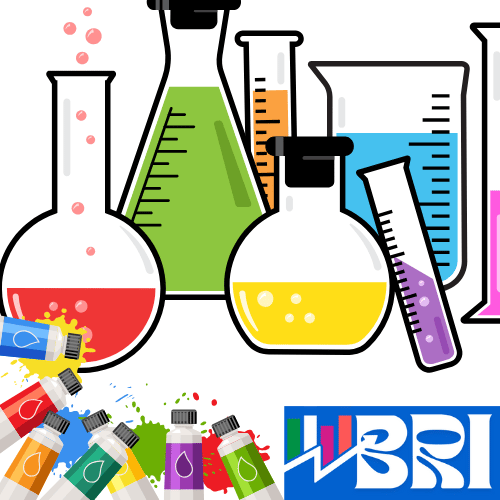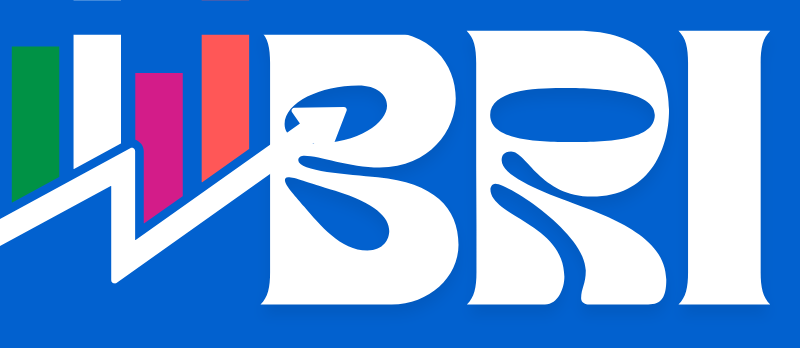
Recycled Aluminium Market Size
As per the Recycled Aluminium Market size analysis conducted by the CMI Team, the global Recycled Aluminium Market is expected to record a CAGR of 4.43% from 2025 to 2034. In 2025, the market size is projected to reach a valuation of USD 100.24 Billion. By 2034, the valuation is anticipated to reach USD 148.10 Billion.
Recycled Aluminium Market Overview
As per the industry experts at CMI, driving demand for recycled aluminium across automotive, construction, and packaging is the increasing emphasis on sustainable manufacturing, energy efficiency objectives, and environmental regulations, nurtured by technological advancements and corporate civil initiatives toward circular economy practices.
Recycled Aluminium Market Growth Factors and Dynamics
- Volatility in Raw Material Supply: The recycled aluminium market strongly depends on the availability of aluminium scrap, which might fluctuate based on the economic cycle, consumption patterns, and regulatory changes. In times of economic downturn, slowed scrap generation leads to a tighter supply situation, thus causing an increase in prices. Trade restrictions and export bans affecting scrap flows from Europe and China have also influenced global scrap flows. Industries requiring a stable supply of scrap may therefore suffer from production delays and rising costs in such environments, competition for prime scrap from the automotive, construction, and packaging sectors may drive recyclers to better sourcing and upgrading sorting technologies. A company engaged in integrated operations for scrap collection and recycling is, therefore, largely insulated from this volatility. However, considering that smaller players are usually at risk due to such supply chain disruptions, these disruptions can influence long-term profits and planning in the recycled aluminium business.
- Rising Importance of Circular Economy Policies: Many countries’ governments have enacted circular economy laws, which cover waste reduction and conservation of resources, and encourage sustainable production. The Circular Economy Action Plan in the European Union and other such movements in China, the U.S., and Japan are directly promoting the recycling of aluminium by setting mandatory recycling targets and incentivising the use of recycled content. These laws motivate manufacturers to blend more recycled aluminium into their products and thereby increase demand for secondary aluminium. Moreover, the new landfill and waste disposal regulations will create more opportunities for recycled materials. Companies moving forward with operations based on circular economy principles are enjoying a slew of benefits, such as regulatory incentives, investment incentives, and improved brand value. Newer forces regulating resource efficiency and closed-loop production are radically changing industrial strategies and enhancing the future of recycled aluminium markets.
- Growing Demand for Sustainable Packaging: Sustainability trends are reshaping the packaging sector and have led to an unprecedented demand for recycled aluminium. Governments around the globe are stopping single-use plastic serving industries from replacing plastic packs with recyclable, eco-friendly materials. Aluminium cans, foils, and trays fulfil the criteria of recycling, lightness, and moisture and contamination protection. Some of the largest food and beverage companies are pushing to raise the recycled content of their packaging to meet their sustainability objectives. However, mounting consumer preference for eco-friendly products also drives brands to search for alternatives to plastic packaging, pushing aluminium. With the rapid increase in e-commerce and food-on-the-go, the demand for packaging that is safe, sustainable, and recyclable is skyrocketing. Recycled aluminium packaging offers a low-carbon way to package their goods without compromising on quality, thus forming one of the major materials in the transition globally towards greener supply chains.
- Uplifting the Electric Vehicle Industry: At this time, all over the world, homes are becoming electric vehicles (EVS) and demand for lightweight, eco-sustainable materials such as recycled aluminium is peaking. Because of weight reduction, electric vehicles can achieve significant savings in battery efficiency and driving range, making recycled aluminium an ideal material for EV applications. Key players such as Tesla, Ford, and Volkswagen are increasingly switching from raw material manufacture to recycled aluminium for the production of body frames, battery enclosures, and structural parts for cars to meet sustainability targets and enhance vehicle performance. Adoption of greener materials by automotive OEMS is further fuelled by regulations aimed at promoting lower vehicle emissions. The global demand for secondary aluminium will further see a significant jump as EV production is expected to grow at double-digit rates around the world until 2030. Recycling involves lower carbon footprints and cost savings, attracting manufacturers targeting carbon neutrality. This trend is likely to significantly boost the market for recycled aluminium in the transportation sector over the next decade.
Report Scope
| Feature of the Report | Details |
| Market Size in 2025 | USD 100.24 Billion |
| Projected Market Size in 2034 | USD 148.10 Billion |
| Market Size in 2024 | USD 95.99 Billion |
| CAGR Growth Rate | 4.43% CAGR |
| Base Year | 2024 |
| Forecast Period | 2025-2034 |
| Key Segment | By Source, End-Use Industry and Region |
| Report Coverage | Revenue Estimation and Forecast, Company Profile, Competitive Landscape, Growth Factors and Recent Trends |
| Regional Scope | North America, Europe, Asia Pacific, Middle East & Africa, and South & Central America |
| Buying Options | Request tailored purchasing options to fulfil your requirements for research. |
Recycled Aluminium Market SWOT Analysis
- Strengths: The recycled aluminium market has the inherent enormous environmental benefit that up to 95% of energy is saved in production compared to primary aluminium production. It also supports global decarbonization initiatives and is therefore very attractive in several sectors, such as automotive, packaging, and construction. Aluminium is Recyclable without losing its properties, which ensures consistent quality of material, promoting a lot of adoption. The lower production costs offer savings to companies as compared with mining and refining newly produced aluminium. Furthermore, adding government subsidies for recycling infrastructure and tighter regulations on waste management further bolsters the market. Well-established networks of recycling markets, such as those in North America and Europe, could thereby also be relied upon for constant raw material supply. Major players invest in research and development to have advanced technologies that boost operational efficiency and increase recovery rates. All these major strengths, therefore, position recycled aluminium as a sustainable, economic, and technically viable material for the future.
- Weaknesses: Undoubtedly, the recycled aluminium market has a glaring weakness. Scrap availability fluctuates significantly, and prices vary. As a result, stability and term agreements are difficult to achieve. The quality of post-consumer scrap varies greatly and requires extensive processing, further raising production costs. Recycling operations, in most cases, require an upgrade to an expensive, modern, and environmentally friendly production facility, mostly in older recycling plants. AT high-energy costs in most of Europe and Asia further strain recyclers’ profitability. Smaller companies are subject to entry barriers related to capital-intensive technology requirements. Limited awareness about the benefits of recycling in emerging economies further restricts market expansion. In addition, contaminated aluminium scrap due to coatings and composite material makes the recycling process more difficult and lowers recovery efficiency. All these factors together hinder scalability and competitiveness for some recycling operations, especially in developing markets.
- Opportunities: The recycled aluminium market is just waiting to grab the growing opportunities lying in the form of applications across sectors. The major growth engine is in the demand for electric vehicles that call for lightweight structures and eco-friendly materials. Regulations in many parts of the world, from the EU Green Deal to U.S. infrastructure initiatives, have a place for investments in recycling technologies and in carrying out the practices of a circular economy, boosting the demand for recycled aluminium. The rising consumer preference for sustainable packaging, particularly in the beverage and food industries, is, however, contributing to increased interest in aluminium recycling. AI-driven sorting and advanced remelting processes are improving recovery rates and reducing operating costs. Emerging markets in Asia-Pacific and Africa offer untapped growth potential as recycling infrastructure builds out. Furthermore, these partnerships are strengthening the integration of the supply chains by ensuring a long-term supply of scrap from recyclers to end-use industries. With increasing corporate focus on ESG standards, recycled aluminium becomes the preferred material in all industries, thus creating huge avenues for growth in the future.
- Threats: Several external threats could encroach upon potential growth in the market for recycled aluminium. Global scrap price volatility, caused by entropy in the supply and demand dynamics and trade restrictions, creates an unpredictable environment for both recyclers and manufacturers. Increased energy prices in Europe and some parts of Asia significantly impact the profitability of recycling operations. Geopolitical unrest and changing trade rules, for example, the imposition of tariffs on aluminium and scrap materials, disrupt supply chains and pricing structures. Environmental regulations promoting recycling also impose stricter renal dosages and operational expenses on the recycling facilities. Among other technological barriers, recycling contaminated or complex scrap types can also hinder processing efficiency and output quality. Besides, competition from alternative sustainable materials such as recycled plastics and composites may be a challenge to aluminium in selected applications. Considering that all these threats together represent a call for technological innovation and policy backing, plus strategic planning in the recycled aluminium sector.
List of the prominent players in the Recycled Aluminium Market:
- Novelis Inc.
- Constellium SE
- Hydro Aluminium (Norsk Hydro ASA)
- Real Alloy (Real Industry Inc.)
- Kaiser Aluminium Corporation
- UACJ Corporation
- Rio Tinto Group
- Arconic Corporation
- Sims Metal Management Limited
- European Metal Recycling Ltd. (EMR)
- Hindalco Industries Limited (Aditya Birla Group)
- TOMRA Systems ASA
- Alba (Aluminium Bahrain B.S.C.)
- Metal Exchange Corporation
- OmniSource Corporation (A Steel Dynamics Company)
- Matalco Inc.
- Interco Trading Company
- ELG Utica Alloys (A division of Cronimet Group)
- EGA (Emirates Global Aluminium)
- Kuusakoski Group Oy
- Others
The Recycled Aluminium Market is segmented as follows:
By Source
- Abrasive Grade
- Nuclear & Defence Grade
By End-Use Industry
- Automotive and Transportation
- Building and Construction
- Packaging
- Industrial Machinery and Equipment
- Electrical and Electronics
- Consumer Goods
- Others
Regional Coverage:
North America
- U.S.
- Canada
- Mexico
- Rest of North America
Europe
- Germany
- France
- U.K.
- Russia
- Italy
- Spain
- Netherlands
- Rest of Europe
Asia Pacific
- China
- Japan
- India
- New Zealand
- Australia
- South Korea
- Taiwan
- Rest of Asia Pacific
The Middle East & Africa
- Saudi Arabia
- UAE
- Egypt
- Kuwait
- South Africa
- Rest of the Middle East & Africa
Latin America
- Brazil
- Argentina
- Rest of Latin America
[embedsocial_reviews id=”d4ae80cffae3d938f997111953699a733c8e6f99″]
